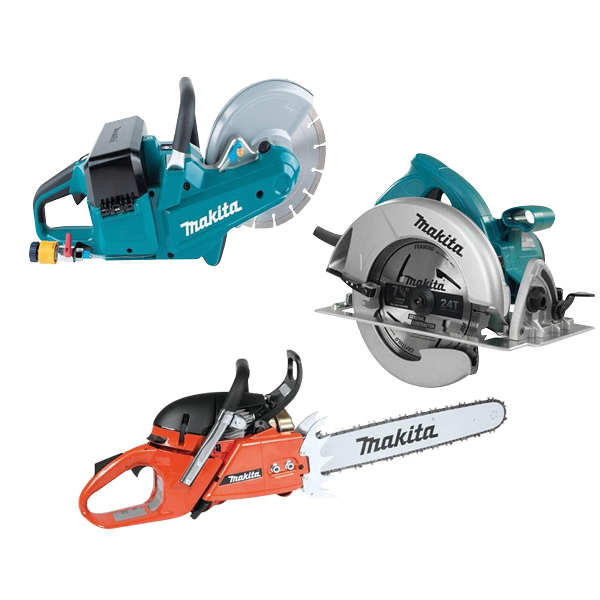Understanding Different Types of Saws For Rent
Saws are a fundamental tool for any construction or renovation project. From cutting through wood to slicing through metal or concrete, there’s a saw designed for every task. Understanding which saw to use for a particular job not only improves efficiency but also enhances safety. Unless you own a few saws, chances are that you may not know the correct use or which to select.
Each saw has a unique set of operating procedures and safety protocols. Let’s review the types of saws you may need to rent for your project and then dive into the safety features of each.
Types of Saws for Rent
Circular Saw – Ideal for straight cuts on wood, plastic, and metal. Portable and versatile, it’s commonly used for framing, fencing, and DIY projects
Reciprocating Saw (Sawzall) – Known for its aggressive cutting style, perfect for demolition work, cutting pipes, or making quick cuts in various materials.
Miter Saw – Best for making precise angled cuts. Frequently used for trim work, moldings, and other detailed carpentry.
Table Saw – A powerful tool for ripping large sheets of wood or plywood. Perfect for cabinetry and other woodworking projects.
Tile Saw – Specialized for cutting ceramic tiles cleanly and accurately.
Pavement Saw – Ideal for cutting through asphalt and concrete pavements during road work or building foundations.
Chainsaw – Effective for cutting wood, especially in landscaping or heavy-duty construction tasks.
Did you know Massive Equipment offers a variety of saws for all your cutting needs? Reach out to us to find the right tool for your project.
5 Safety Tips for Saws
The main tip to remember is to always wear protective gear, ensure blades are sharp and suitable for the material, and maintain proper hand positioning. Here is more information on saw safety.
- Wear Proper Protective Gear – Safety goggles or face shields to protect your eyes from debris and hearing protection helps when using louder saws like chainsaws or table saws. Gloves improve grip and reduce vibration (avoid loose-fitting gloves that could get caught in the saw).
- Inspect the Saw Before Use – Check blades for dullness, cracks, or other damage and ensure guards, safety features, and triggers are functioning properly.
- Secure the Material – Use clamps or vices to keep materials steady and avoid binding or kickback.
- Avoid Loose Clothing or Jewelry – Loose clothing, jewelry, or dangling accessories can easily get caught in moving parts.
- Allow the Blade to Reach Full Speed Before Cutting – Starting a cut with a partially accelerated blade can cause it to jump or kick.
Safety Tips for Different Types of Saws
Circular Saw – Avoid cutting with the blade guard open and always use a rip fence or guide when making straight cuts.
Reciprocating Saw (Sawzall) – Keep a firm grip as these saws tend to vibrate heavily and ensure the blade is securely attached before use.
Miter Saw – Keep fingers and hands away from the blade path. Allow the blade to come to a complete stop before lifting it from the material.
Table Saw – Always use push sticks for small pieces and never stand directly behind the blade to avoid potential kickback injuries.
Tile Saw – Use water-cooled tile saws to minimize dust and keep blades cool.
Pavement Saw – Wear respiratory protection due to dust production and ensure blades are designed for cutting concrete or asphalt.
Chainsaw – Always maintain a firm two-handed grip. Never cut above shoulder height to maintain control. Engage the chain brake during starting or repositioning.
Need to rent a saw? Massive Equipment offers a variety of rental saws for all your cutting needs. Reach out to us to find the right tool for your project.
